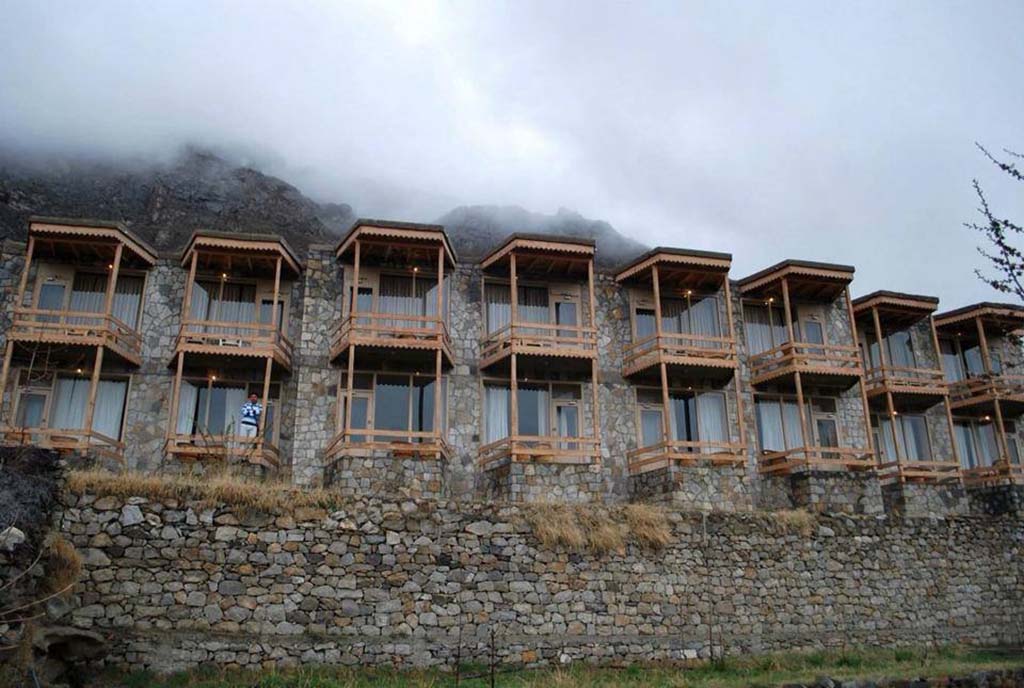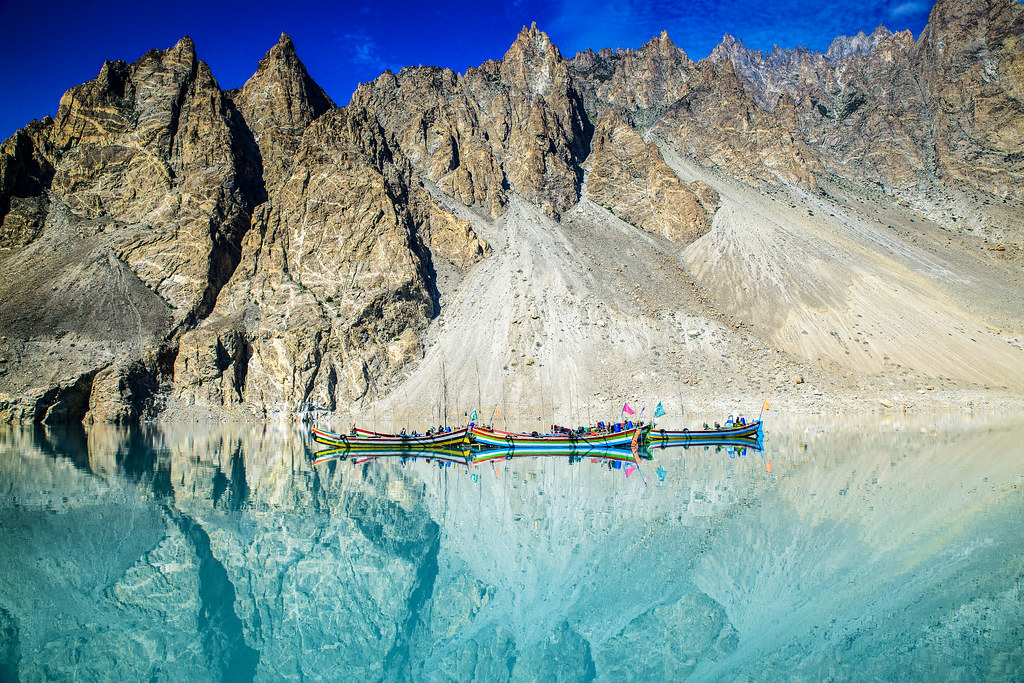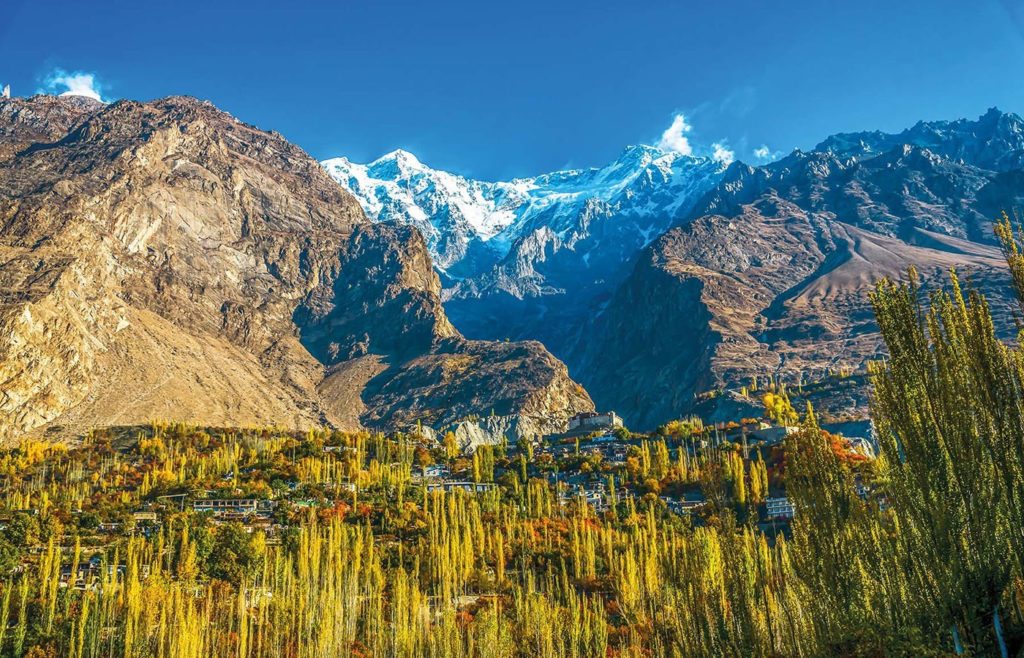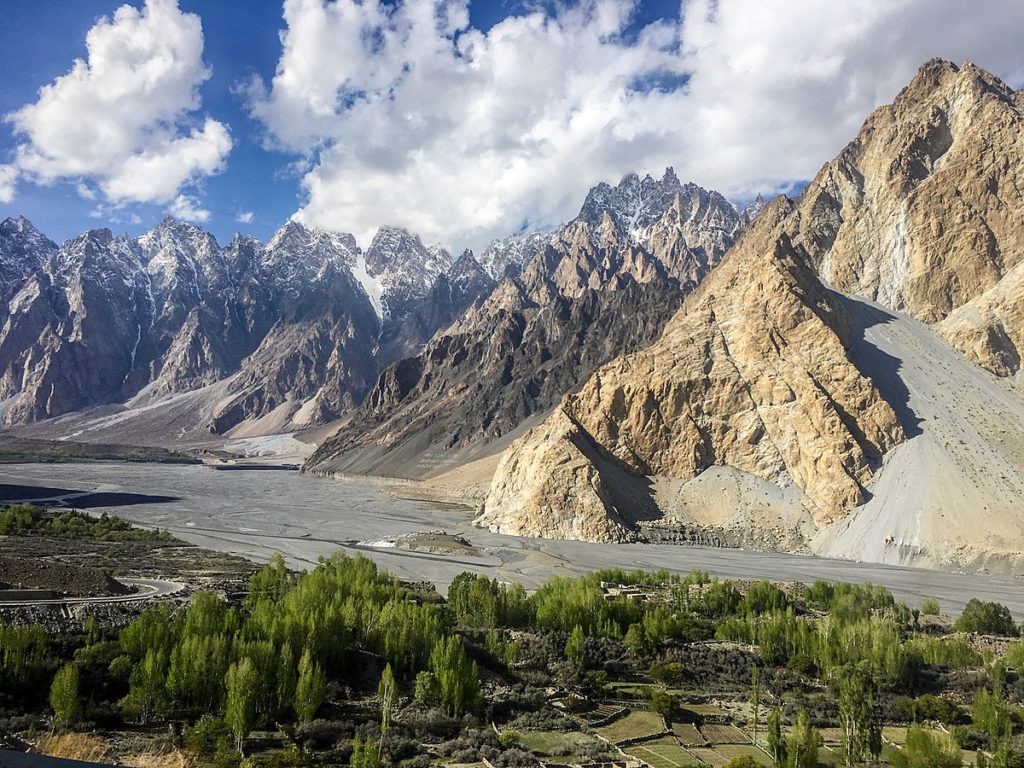Here is a list of Top 10 places to visit in Hunza Valley 2020. Pakistan is a region enriched in natural beauty and its northern areas are a treat for the senses to relax out of the hectic routine. Among all of these colorful places across the country, some of the regions are out-of-the-world spots. Such a mesmerizing tourist place is Hunza, known as Heaven on Earth. It is a beautiful mountainous valley located in the Gilgit- Baltistan region of Pakistan. Situated at the north/west of the Hunza River, it is surrounded by several high peaks including Rakaposhi, Hunza Peak, BojahagurDuanasir II, Darmyani Peak, GhentaSar, UltarSar, and Ladyfinger Peak. Here is why you should visit these spots:
Ultimate Guide to travel to Hunza Valley
Hunza valley is a famous tourist spot local as well as international tourism. A lot of people visit Hunza every year to enjoy their vacations during the summer season.
What is the Best time to Visit Hunza Valley?
The best time to visit Karimabad and the Hunza Valley is from April to October.
Top 10 Places to Visit in Hunza
1. Rakaposhi View Point
While leaving Gilgit City, about an hour’s drive at Karakoram Highway, there is a point known as Rakaposhi View Point which is a small place from where we can have a view of Rakaposhi Mountain. The scenery will be compelling for you to take out the camera and capture the view. The blue sky marginalizing the perpendicular snow-covered mountains is undoubtedly the first attraction of Hunza Valley. The peak is surrounded by some of the famous glaciers like Barpu, Biro, Bagrot, and Pisan.
2. Karimabad Hunza Valley
The second on the list is the Karimabad which is the capital of Hunza. This village is particularly famous for its historical significance. The village gives the most magnificent ancient look because of its stone-made houses and streets. Not only that but the locals of Karimabad can be seen always welcoming with smiling faces and living a modern life while keeping their culture and traditions alive. Tourists love the way, how people of Karimabad live and above all they like their hospitality.
3. Altit Fort
Altit Fort is an ancient fort above Karimabad in the Hunza valley. It was more like a home to the hereditary rulers of the Hunza state who are known under the title Mir. As far as the historical importance of this fort is concerned, Altit Fort was the residence of a former prince around 1100 years old and now it is serving as a museum. The building is designed in a uniquely creative manner which makes it the masterpiece of the architect. The design of this fort has been restored by Agha Khan Culture Trust. As you enter through the gates of Altit Fort, there is a beautiful garden of Cherries with an orchard of apricots, lush green grass, a finely made walkway and beautifully designed small cafes for the tourists.
4. Baltit Fort

The Baltit Fort is more than 700 years old and it depicts the traditional Tibetan and Balti architectural heritage. The fort has been converted into a museum now and is open for all to visit. This fort holds significance due to the traditional events like Bofao and Ginaniwhich are being organized here. Something so special about this magnificent fort is the variety of antiques and a fine collection of good old days having the belongings of royal families. The tourists can visit it anytime and have a glance at these historic traditional items.
5. Eagle Nest Hunza Valley

What can be better than having the most mesmerizing experience of witnessing the dawn and the dusk while staying in Hunza? It makes you inhale the freshness and a message of hope the dawn brings in the land of colors amid the mountains. The best spot to enjoy this scene is the fabulous peak of Lady Finger and Rakaposhi from the famous eagle nest in Dukair. Duiker is a small village and commonly known as Eagle Nest as the hotel is situated there and offers the panoramic views of Hunza. The place can be reached in 30 minutes drive from the capital of Hunza I .e.Karimabad.
6. Attabad Lake

Can you ever think of a disaster to turn into a miraculous beauty of nature? So here is the one for real and it is the most beautiful Attabad Lake. According to history, a disaster turned Hunza River into a beautiful lake a few years back in a landslide when two mountains met at a point and obstructed the passage of the Hunza River which later turned into a lake. The length of Attabad Lake is about 29.3 Kilometers and its starting point is from a small village known as Ganish.
7. Passu Cones Hunza
The most romantic place at Hunza Valley is Passu. Thousands of tourists rush to explore this mesmerizing town every year. The best to stay place in this small town is a hotel namedPassu Inn which is located at such a locale which is cool, serene and silent. The hotel serves amazingly delicious food with an unforgettable taste. If you want to explore this region properly, you need a good long time, at least 10 days to enjoy the glamour of this beautiful spot.
8. Rush Lake
The rush lake is about 5000m in height and one of the highest alpine lakes in Pakistan. This lake is located in Nagar Valley which is enchanting scenery of hues. It is so much difficulty in terms of trekking and only experts can make it visit there. That’s the reason it is not preferred for everyone to reach this place.
9. Gojal Village
Gojal is a village of Hunza with great people residing here. It is known as the village of kind-hearted and loving people who are amazing at hospitality for everyone visiting there. They are highly skilled and culturally rich people in all aspects.
10. Sost Border
Sost is the last village of a Hunza on Karakoram Highway next to the Chinese border.As a town it is an important place on the highway for all passengers and cargo transport because all traffic crossing the Pakistan-China border passes through this way.
The lifestyle of Hunza Valley
The people of Hunza are very healthy and as per the survey, they have the longest lifespan in the world. They remain strong and vigorous even in old age. This is because of the pure water they drink and their natural diet. The people walk a lot on the rugged ground every day which serves as physical exercise for them.
Among other organically grown food, the most common fruit in Hunza is apricot which is considered to be their Gold. The people there eat fresh apricots in the season, dry them and also crush the dried apricots of which jam and ice-cream are made.
They also get a nutritional richness of other fruits too that are grown there including apples, pears, black and red cherries, peaches. The number of orchards and trees under cultivation is used to gauge the economic stability of the local people in Hunza. Another important component of their diet is the chapatti made up of richly nutritious grains. Moreover, the Glacial Milk also helps to keep them healthy.
What is Hunza Famous for?
Hunza is famous for its culture, festivities, and cuisine just like Chitral. Here is brief info about the culture and festivals of Hunza Valley
Traditional Festivals of Hunza
As mentioned above, people of Hunza Valley love to celebrate all events related to religion, culture and normal life events. These festivals fall into two main categories namely religious festivals and cultural festivals. The religious festivals include:
- Eid-ul-Azha
- Eid-ul-Fitr
- Eid Milad-un-Nabi (S.A.W.W)
- Nowroz festival
- Shab-e Barat,
- Shab-e-Miraj,
- Eid-e-Ghadeer,
- Salgirah-e- Imam ZmanMubar (Birthday of Agha khan)
The traditional Ginani festival is celebrated by the local community with large gatherings organized in Altit, Baltit, and Aliabad. This festival is celebrated to welcome the new harvesting season with joy and happiness. The celebrations are made worthy of dance, music and a traditional dish is made to mark the festival known as DirumPitti.
Another famous festival is the Spring Blossom Festival which allows people to sit together and enjoy life. Exhibitions, sports programs, and cultural shows attract the audience in this festival to celebrate the cultural heritage of the region. Apart from these, other festivals include Baba Ghundi and Shimshal Kuch festival.
Dresses of Hunza Valley
The weather from April to September is quite pleasant in Hunza which requires the people to wear light woolen clothes. However, during the winter season, the locals wear heavy woolen clothes to cope up with the chilly weather all day long.
The women particularly wear colorful, knee-length shirts with shalwars and cover their heads with traditional embroidered caps. For men, the common dress is ShalwarQamiz and caps made out of hand-woven woolen material called ‘Pattu’. In winter season they wear loose embroidered gowns as overcoats.
The cuisine of Hunza Valley
The special dish of Hunza is known as ‘fittis’ which is very delicious and worth tasting. These are cakes made of wheat flour, milk, butter and salt, baked on a hot stone. Apricots, apples, plums, peaches, cherries, and grapes are various fresh fruits grown in this region. Along with that, the Hunza bread is a nutritious diet of grains. When talking about foreign visitors, Grape extract known as ‘Hunza Water’ is very popular among them. The people of Hunza like to have a simple and natural diet rich in nutrients and that’s the reason for most of them having blushing, smiley faces all the time and an active routine. Their workout is the walk through the twists and turns in the towns and they work hard to achieve the best.
Moreover, the locals also love to have Harissa which is made up of wheat, meat, oil. Similarly, like oil, they can use dry apricot seeds. This dish is served on special occasions, including weddings.
Another dish the people of Hunza like is known as Chapshurowhich is just like a pizza for this region. Chapshuro can be loaded with meat, onions, chilies, tomatoes and fresh coriander leaves.
Shopan is a traditional one from Gilgit-Baltistan especially ready on the event of Nasalo/Nos (Death fact barbarian king, shariBadat).
The cuisine is not finished yet and while knowing that, you can take a taste of Mamtu which is an exception rather a divine dish to Gilgit-Baltistan. Mamtu is cubes supper with flour centrally filled for mutton/Beef.
Don’t forget to eat Go-Lee. It should make your breakfast exquisite. You can enjoy its rich taste with a hot cup of green tea. This is such a scrumptious form of traditional and nutritiously rich bread, constructed with entirety grain flours and served by spreading butter on bread.
People and Language of Hunza
Knowing more about Hunza, the people of this valley are mostly Ismaili Shia Muslims who are the followers of Prince Karim Agha Khan IV, while in the area of Ganish Village over 90% are Shia Muslims. The Hunza region is mainly home for the people belonging to three different ethnicities:
- The Lower Hunza area which extends from Khizerabad to Nasirabad mainly belongs to the Shinaki people whose local language is Shina.
- The Central Hunza area which extends from Murtazaabad to Attabad mainly belongs to the Burushaski speakers.
- The Upper Hunza area which is commonly known as Gojal extends from Shiskat to Khunjerab and belongs to Wakhi speakers.
Just like the beauty of Hunza Valley in terms of its mesmerizing surroundings, the people of this region also have a beautiful heart. The greet warmly and are best at hospitality for everyone visiting there. Although Burushaski is the most widely accepted language among all but the majority of the people also understand Urdu and English.
The people of Hunza Valley are richly culture oriented and love to celebrate different events. Locals from all age groups take part in these activities and they are best at knowing the way to keep their traditions alive to ensure their identity grows stronger. They are also fond of traditional dance which is very common and there is a special traditional band for this dance which makes it be more of a fun package.
Education in Hunza
According to a survey held, the literacy rate of the Hunza valley is believed to be above 90%. The valley proves to be a ‘role model’ for Pakistan regarding high literacy rate and school enrolment where every child to a minimum studies up to high school. Everyone belonging to Hunza is passionate to get educated and so they join several reputable colleges, universities of Pakistan and even go abroad to get higher education.
Conclusion
So in a nutshell, these details are enough to compel you for making a plan right now to visit Hunza Valley and spend the most of your time here if you are already so fed up with the office routine. Touring is the best form of relaxation therapy and planning it for Hunza Valley is even healthier for your senses to restore with the refreshing surroundings and a romantic blend of hues in the picturesque view of this region.



